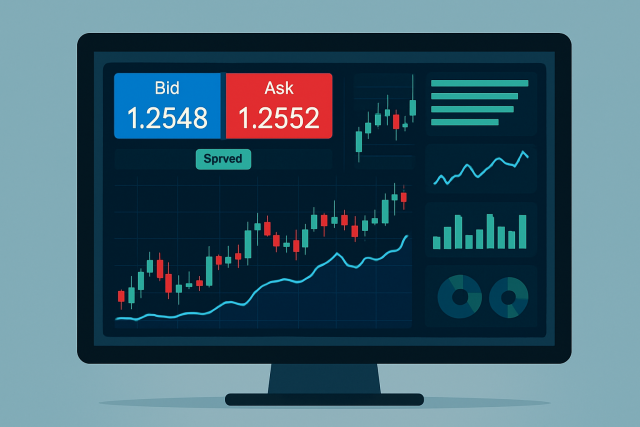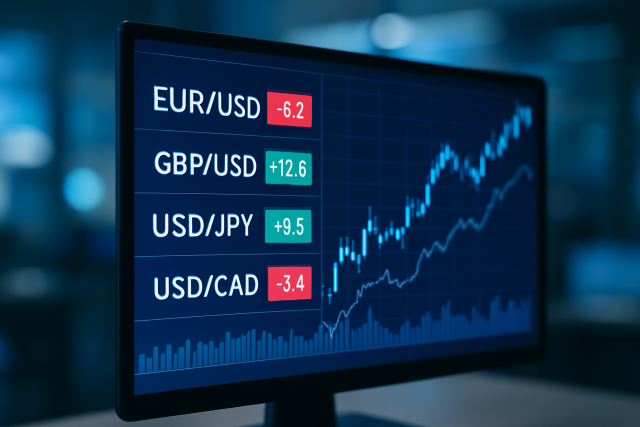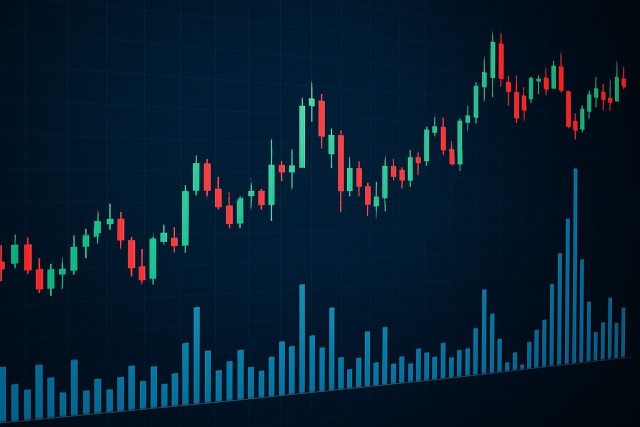
What Is Bid and Ask Spread in Trading?
Understanding the bid and ask spread is crucial for all traders. This guide breaks down the basics,...

Understanding the difference between ask price vs bid price is vital for anyone hoping to find their footing in the often tricky world of financial markets. This article takes a friendly deep dive into these important concepts and unpacks what they mean and how they differ. It also explores the subtle ways they steer traders’ decisions across various asset types.
The ask price is basically the smallest amount a seller is willing to budge for an asset. On the flip side, the bid price shows the highest offer a buyer is ready to throw into the ring.
Picture a bustling marketplace where sellers proudly display the prices they are asking for their goods, while buyers shout out what they are willing to pay.
Ask and bid prices are constantly dancing around each other in the market, fueling a lively price discovery process. That little gap between them isn’t just some dry number—it really shapes liquidity and plays a pivotal role in deciding the prices at which trades get hammered out, subtly steering traders’ strategies and the market’s mood in real time.
The bid-ask spread is simply the gap between the ask price and the bid price at any given moment. It serves as a key indicator of market liquidity and quietly reveals the hidden cost of making a trade—something traders definitely want to keep on their radar when juggling fees and slippage.
| Asset | Bid Price | Ask Price | Bid-Ask Spread |
|---|---|---|---|
| Stock A | $99.50 | $99.55 | $0.05 |
| Forex EUR/USD | 1.1850 | 1.1852 | 0.0002 (2 pips) |
| Crypto BTC | $27,500 | $27,520 | $20 |
| Illiquid Stock B | $15.00 | $15.50 | $0.50 |
The size of the bid-ask spread can swing quite a bit depending on a few factors like market volatility and the type of asset or how lively the trading action is. Assets that are highly liquid—think major stocks or popular forex pairs—usually sport tight spreads. This is a win for keeping trading costs down. On the flip side, less liquid assets or markets with fewer players tend to show wider spreads. This can be a bit of a pain. Market makers are savvy risk managers who often tweak spreads on the fly to shield themselves when things get volatile. That, in turn, nudges up the cost of executing trades for everyone involved.
To understand why ask price, bid price and the spread matter, it helps to look at real trading examples from markets like stocks, forex and cryptocurrencies.

Visual chart showing bid price, ask price, and spread variations across different asset classes
Both professional and retail traders keep a close eye on ask and bid prices to find the best moments to jump in or cash out. They manage their risks like seasoned pros and get a feel for the overall market vibe.
Many people tend to think the ask price is always just a fixed notch above the bid price. Usually that is the case but every now and then especially during wild market swings or technical hiccups things don’t play by the usual rules. I have noticed some traders also get their wires crossed by mixing up the bid price with the last traded price. Trades can land at the bid, the ask or anywhere in between depending on the order type.
"The ask price usually sits a bit higher than the bid, though in choppy, volatile markets, you might occasionally see them overlap or encounter some unusual quirks. Keeping this in mind can really save traders from scratching their heads and helps them navigate their trades with a steadier hand."
Bid and ask prices operate pretty much the same way across different markets. There are a few quirks when you dig into equities, forex, commodities and cryptocurrencies—especially around the typical spread sizes and trading hours.
| Market Type | Typical Spread Size | Liquidity Characteristics | Trading Hours |
|---|---|---|---|
| Equities | Usually pretty tight (around $0.01-$0.05) | Liquidity is often robust, especially for those big-name blue chips | Market hours, plus a bit of pre and post session action |
| Forex | Hugely tight spreads (just 1-3 pips) | Arguably the most liquid market out there, practically never sleeps | Open 24 hours a day, five days a week, no joke |
| Commodities | Moderate spreads that shift depending on the asset | Liquidity tends to be decent but watch out for seasonal swings | Mostly sticks to regular market hours |
| Cryptocurrencies | Spread size can be all over the map depending on the coin and exchange | Highly volatile, with liquidity that loves to keep you on your toes | Trading never stops—runs 24/7 with global access |
Cryptocurrencies never seem to take a break from trading, which often means their spreads can dance all over the place depending on how busy the market is and just how liquid the exchange happens to be. Meanwhile, smaller stocks or those less popular commodities usually come with wider spreads simply because they don’t get traded all that often. Getting a handle on these little quirks can really help traders tweak their strategies to fit the unique rhythm of each market.
Understanding the dynamics of ask price vs bid price can give traders a leg up when executing trades more efficiently and trimming unnecessary costs. It also helps in crafting sharper strategies. Tools like TradingView’s user-friendly charts or TrendSpider’s advanced alerts often lend traders a much-needed advantage. They keep tabs on price levels and watch those spreads like a hawk.
Are you tired of juggling multiple tools for your trading needs? TradingView is the all-in-one platform that streamlines your analysis and decision-making.
With its powerful charting capabilities, real-time data, and vibrant community, TradingView empowers traders like you to stay ahead of the market. Join thousands who trust TradingView for their trading success.
Are you ready to elevate your trading game? Binance, the leading cryptocurrency exchange, offers a seamless platform for traders of all levels. With its user-friendly interface and powerful tools, you can navigate the dynamic world of digital assets with confidence.
16 articles published
Driven by a passion for democratizing financial markets, Vivienne creates educational content on forex trading and currency market fundamentals for beginners.
Read Posts
Understanding the bid and ask spread is crucial for all traders. This guide breaks down the basics,...

Pips are the basic units used to measure price changes in forex trading. Learn what a pip is, how to...

Learn how the True Range indicator captures market volatility and price swings, empowering traders t...

Unlock the full potential of TrendSpider with this authoritative guide to TrendSpider University tra...
